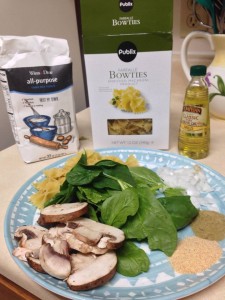“The moral rules of destroying our fellow biota get even more tangled, the deeper we go. If we draw the okay-to-kill line between “animal” and “plant,” and thus exclude meat, fowl, and fish from our diet on moral grounds, we still must live with the fact that every sack of flour and every soybean-based block of tofu came from a field where countless winged and furry lives were extinguished in the plowing, cultivating, and harvest.”
–Barbara Kingsolver, “You Can’t Run Away on Harvest Day”
I have never been a big fan of vegetables–unless you count broccoli drowned in melted cheese or potatoes in all of their glorious forms. (French fries are totally a vegetable, right?) It’s no surprise that I failed when my vegetarian brother challenged me to see how long I could go without eating meat. I made it a total of four days, that is, until my parents made breakfast for dinner. Without hesitation, I quit the challenge the second the smell of my dad’s juicy bacon hit my nose.
I can see why a person might choose to be a vegetarian. First, a vegetarian diet has health benefits. Well, it should have health benefits, but that is if you actually eat vegetables. (I was more of a pastatarian than a vegetarian.) Another reason, and probably the most popular reason, is because of moral beliefs. Many people are uncomfortable with the idea of having an animal killed for their eating pleasure instead of necessity. In addition to being killed, often times these animals live in awful conditions up until their death. These animals are purposely fed too much and are kept in tight, overcrowded spaces.
Call me a bad person, but I find it hard to feel guilty when I read about these conditions. This is partially because I choose to live in denial and ignore the issue when faced with it. When protestors pass out pamphlets on campus about the living conditions of these animals, I throw mine away immediately. Also, I have not seen it firsthand. If I visited one of these “farms” on my own, I would probably change my mind about eating meat. Regardless of whether these animals lived happy lives or not, they are still killed for people’s pleasure.
Barbara Kingsolver, author of Animal, Vegetable, Miracle: A Year of Food Life, poses an interesting counterargument to vegetarianism that I had never considered before. While vegetarians might believe they are saving the lives of animals by not consuming meat, animals are dying anyway because of our harvesting of plants. According to Kingsolver, millions of birds die each year due to pesticides, while other animals are being starved out of their homes or getting run over by mowers. I have heard the argument about how killing a plant is still killing a living thing, but I had never considered how harvesting plants could affect other animals. If plants and animals die whether we eat meat or not, how do we eat ethically?
Everyone has their own idea of what it means to eat ethically. For some, that means being a vegetarian or buying only local produce. For others like Kingsolver, eating ethically means eating animals that have “lived a pleasant, uncrowded life outdoors, on bountiful pasture, with good water nearby and trees for shade.” I don’t know that there is one definite answer on how to eat ethically. As for me, my personal principle for eating is simple: Eat what tastes good and makes me feel good.
Pasta is one food that always makes me feel good. Typically, I prefer to top my pasta with chicken or meatballs, but in memory of my short-lived pastatarian days, I decided to go with a meatless dish.
- 12 ounces rotini noodles (or other noodles of choice)
- 1 tablespoon olive oil
- 3 cloves garlic, minced (I used garlic powder instead.)
- 1 cup onion, chopped
- 1 tablespoon fresh thyme
- 4 cups mixed fresh mushrooms, sliced (oyster, shiitake, cemini, portobello etc…)
- 2 tablespoons all-purpose flour
- 2 cups milk (I used half and half to make it creamier.)
- 2 cups fresh spinach, rinsed well and chopped
- ½ cup fresh basil, chopped
- 1 teaspoon salt
- fresh ground pepper
- freshly grated parmesan cheese
**Note: I added a can of cream of mushroom soup because I accidentally put too much spice in the sauce.
DIRECTIONS
- Rinse mushrooms and spinach thoroughly and set aside.
- In large non-stick pan over med-high heat, cook garlic, onion and thyme in oil for about a minute.
- Add mushrooms, cook about 8 minutes, stirring often, until the mushrooms begin to brown and their juices begin to run.
- Sprinkle with flour and stir about one minute, then slowly begin to add the milk, and bring to the boil, stirring constantly for about 3 minutes, or until the sauce thickens.
- Stir in the spinach, basil, salt and pepper. Cook until the spinach begins to wilt.
- Toss sauce with cooked pasta and grate fresh parmesan cheese over individual servings.
––By Sarah Grace Marzullo



